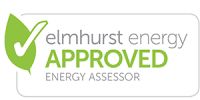Qualified and Accredited to Part L Compliance




SAP10 Part L Compliance EPC
For new houses and apartments.
Building Regulations Approved Document Part L: Conservation of fuel and power 2021, stipulates that a Design Stage Part L Compliance Report is to be submitted to building control prior to construction commencement.
Following completion of construction an As Built Part L Compliance Report and the Energy Performance Certificate (EPC) for the building should be submitted to building control and lodged onto the HMRC public record.
Our On Construction Part L Report and EPC service can help deliver you a compliant build in terms of the latest version of Part L of the building regulations.


SBEM Part L Compliance EPC
For new and existing commercial premises including offices, retail and student accommodation.
If you are renting, selling or building a new commercial premises, you need a Non-domestic EPC. EPCs last for 10 years from submittal.
An NDEA (Non-Domestic Energy Assesor) will assess the energy outputs of your building and use the calculation model SBEM to produce your Regulation Compliance Report and EPC.
Compliance with Part L
Part L of the Building Regulations states that all new buildings in England and Wales meet specific energy and carbon emission standards. SBEM calculations are instrumental in proving that these standards are met.
Why You Should Choose Us
Story
Mission
Frequently Asked Questions
Building Regulation Approved Document Part L: Conservation of fuel and power sets out rigorous energy consumption, carbon emission and building fabric standards to which new buildings need to be built to.
Failing to comply with Part L can result in fines and/or carbon offset payments.
Buildings can be differentiated into 3 categories, domestic, non-domestic and public.
In England, Wales and Northern Ireland, SAP10 is the calculation methodology used to generate Energy Performance Certificates (EPCs) and confirm compliance with Approved Document Part L of the Building Regulations, for dwellings also known as domestic buildings.
It is worth baring in mind that landlord areas in a block of flats, require a SBEM Part L Compliance Energy Assessment (non-domestic) and not SAP10 Part L Compliance Energy Assessment (Domestic).
SBEM stands for Simplified Building Energy Model and is the equivalent for non-public commercial buildings, also known as non-domestic buildings. Depending on the complexity of the building, non-domestic buildings can be categorised as Level 3 (simple), Level 4 (more complex) or Level 5 (complex).
Public buildings require a display energy certificate (DEC) requiring a Operational Rating (OR) calculation to be undertaken.
More often than not Part L compliance for a new house will cost on average about £200-400 excl. VAT. However, this is dependent on the complexity of the geometry of the dwelling and the MEP building services systems.
For a block of flats Part L compliance will be dependant on the number of flats, no. of flat types, building geometry and the complexity of the MEP building services systems. Get in touch if you would like a quote on your block of flats.
A Level 3 SBEM Part L Energy Assessment will usually cost between £2,500-4,500 excl. VAT, and a Level 4 Part L Energy Assessment will cost between £4,500-7,500. Again this dependant on the complexity of the geometry of the building and the MEP building services systems.
If you are building something new, you legally require a Design Stage Part L Compliance Energy Assessment at the pre-construction stage before construction has started. At handover an As Built Part L Compliance Energy Report will need to be submitted for Building Control approval and the EPC for the building lodged on the EPC Register.
It is a legal requirement that a Design Stage Part L Compliance Energy Assessment is to be submitted to Building Control however it is recommended to do this at the Planning Stage or RIBA Stage 2.
An EPC is valid for 10 years.